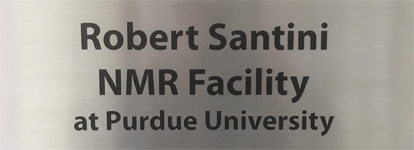NMR facility instrumentation upgrade
2024-03-11
Writer(s): Steve Scherer
The Purdue Interdepartmental NMR Facility recently upgraded much of its instrumentation. The facility has added/upgraded:
- A new Bruker NEO console with automation replacing the Varian Inova system in 365 WTHR.
- A new Bruker NEO console with a high-sensitivity Prodigy™ cryoprobe replacing the DRX system in 367B WTHR.
- A new Bruker NEO console with automation replacing the DRX system in G43 RHPH.

Systems 1) and 3) are running under automation almost full-time and allow users to obtain NMR data with minimal training and minimal time spent at the spectrometer.
The current NMR facility has instruments in four locations across campus where qualified users may access equipment 24/7/365. Individuals also may submit samples for service after contacting NMR staff for guidance.
Generous support for this critical equipment was provided by Chemistry alum James Tarpo and his wife, Margaret; the Purdue Office of the Executive Vice President for Research and Partnerships (OEVPRP) MERI (major experimental research instrumentation) program; and late Chemistry staff member and alum Robert Santini.
Santini was a member of the Department of Chemistry for more than 50 years. He received a PhD with Professor Harry Pardue in 1970 and spent his career here as a senior instrumentation specialist and served for twenty years as the director of the Amy Facility.

According to a Purdue Archives and Special Collections oral history with Santini, Purdue Chemistry was one of the first facilities in the world to run Carbon-13 on a regular basis.
"In the early years of NMR at Purdue in the 1970s, the department had a Varian XL 100-15 spectrometer equipped with an internal deuterium lock, to which Santini subsequently added a home-built Fourier-transform modification based on a Nicolet 1080 computer - useful for 13C and 31P NMR spectroscopy of proteins."
2017 Biomolecular NMR history co-authored by former Purdue Chemistry professor John Markley